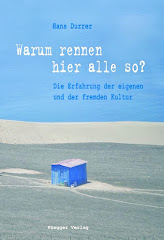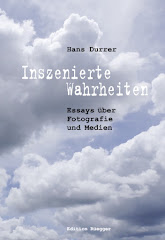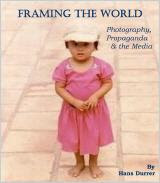In 2002, I spent a semester teaching at a private university in Fujian Province, since then I consider myself an expert of things Chinese. I'm of course joking but must admit that my stay in China has greatly influenced my perception of the country. What I especially recall is an almost complete absence of joy. Andreas Seibert's pictures that he took while journeying along the thousand-kilometer-long Huai River has not altered my impression.
Andreas Seifert is a freelance photographer, born in 1970 in Switzerland, who lives with his family in Tokyo. Since 2002 he has been documenting China's economic development. I love the way he introduces The Colors of Growth. China's Huai River: "The high-speed train from Shanghai to Hefei, the capital of Anhui Province, is moving through a severe thunderstorm. I look out the window. Lightning flashes in the rapidly darkening sky. Heavy raindrops drum down on the roof and windows of the train, making it impossible to see the passing fields and villages. The train slows down. About a week prior, on July 23, 2011, two high-speed trains collided on a viaduct near the city of Wenzhou, in similar weather. Cars were derailed and plunged off the bridge. There were 40 people killed and over 190 injured in the accident. The badly damaged cars were buried on the spot, without further investigation. The official explanation was that this was to make room for emergency vehicles." This telling me in what mood the photographer approached his subject is precisely how I would wish more photography books to be presented – for I want to have a clue in what frame of mind pictures were taken.
The Huai River drainage basin is a complex water system, I learn. It consists of the river itself and of many large and small canals, lakes, ponds and natural and artificial reservoirs. Seibert writes: "In order to get a solid understanding of the river, one must travel in a nonlinear fashion, taking detours along the way. While the places I visited are not located on a linear route, the images in this book are arranged so that by flipping from one page to the other, the reader is virtually traveling from west to east, from the river's source to the river's mouth."
Air and water quality is a major problem in China. I vividly recall how "my" students in 2002 emphasised the clean air on campus – an obvious indication that things were not that way elsewehre.
What Andreas Seibert achieves with his book on the Huai River is however much more than documenting the progressively deteriorating water quality: he also tells the stories of the people who live by, and from, this river. He thus impressively demonstrates that good photojournalism, the intelligent combination of pictures and words, is still unmatched when it comes to storytelling.
Interestingly enough, it was not so much the river but the people and their stories that were still with me when I closed the book. It is no small feat that Andreas Seibert was able to make visible, and thus make me feel, how much we human beings depend on an intact environment.
"The Colors of Growth" is not only an inspiring but also a useful book.
Andreas Seibert
The Colors of Growth
China's Huai River
Lars Müller Publishers, Zurich 2013























No comments:
Post a Comment